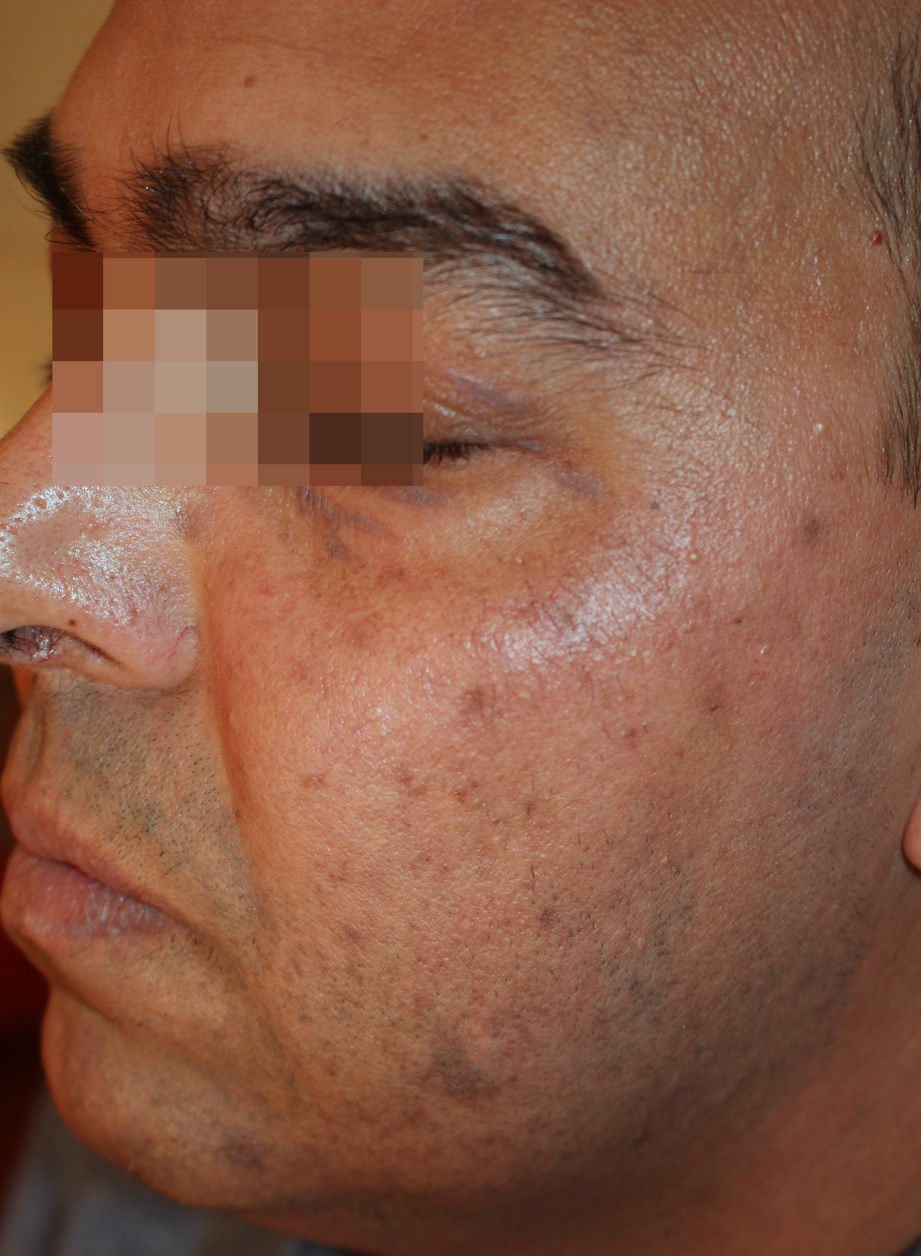Iatrogenic gray-bluish hyperpigmentation.

Downloads
DOI:
https://doi.org/10.26326/2281-9649.28.3.1899How to Cite
Abstract
Many drugs can cause skin hyperpigmentation. In this case nystatin and methylprednisolone can be acquitted. Acyclovir can cause exceptionally photosensitivity but not patch hyperpigmentation. Trimethoprim/sulfamethoxazole may cause photosensitivity and fixed drug eruption; however, in this case an inflammatory phase was not reported before pigmentation.
In the literature there is only one case of ashy dermatitis-type hyperpigmentation of the trunk attributed to omeprazole (2). The role of levofloxacin is more likely because the quinolones and fluoroquinolones pigmentation is well-known. In literature there are 5 cases of gray-bluish hyperpigmentation due to levofloxacin, especially in cases of prolonged administration and in one of these cases the presence of fluorine in the pigment within the fibroblasts has been recently demonstrated (1).
